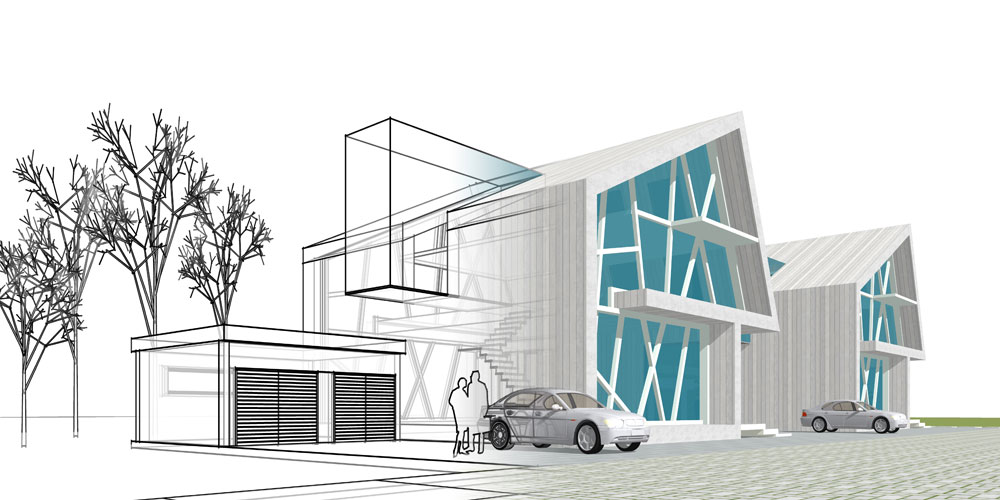
Designing Buildings to Pass Sound Testing
Designing Buildings to Pass Sound Testing
From the very start of the design phase of a new building, it’s extremely important that careful consideration is given to the acoustic element of the building.
By getting us involved at the start of the design process we can undertake comprehensive acoustic design reviews and ongoing site surveys. We always advocate meeting with the design team at the earliest opportunity to go through all acoustic elements for the building’s design, taking into account the site constraints and the most cost-effective method of achieving Part E of Building Regulations. We try to forward any possible ‘onsite’ construction problems and difficulties in achieving successful acoustic construction and subsequently the sound testing for Part E.
Once we have completed the acoustic design review our services don’t finish there. We provide the site team with ongoing design support and site visits. You will have direct contact with the allocated acoustician from the start of the process through to the successful completion of the project.

Acoustic Design & Onsite Construction
Once the first phase of the building is completed, we can undertake sample sound testing to ensure the acoustic design and onsite construction methods are sufficient to pass Part E sound testing.
When it comes to refurbishment projects i.e. houses converted into flats and/or office blocks into flats we can undertake a sample test of the existing wall and floor construction. Once we have established the sound levels for the existing construction we can then look at the extent of the acoustic upgrades to attain Part E Complaisance. This is much more effective than just forwarding an acoustic design that may be too excessive and expensive when the existing construction is already ‘acoustically’ robust and therefore only needs to improve by a few dB.
One problem we often encounter (without our design input) is that the building marginally fails during the sound test. The potential problem that is often overlooked is that many types of acoustic design/materials have attained an acoustic rating within a laboratory. It is very difficult and extremely unlikely that the sound levels achieved on a construction site will be as good as in the confines of a stringent laboratory environment.
When the construction assembly is tested in the lab, it is also certified and an exact description of the materials and the installation techniques are described in detail and followed to the letter, obviously, this should be replicated on your site as closely as possible, however, this seldom happens. This is one of the reasons why a 5dB point difference is allowed between the construction design on paper and the actual on-site construction performance.
When you consider that sound doubles every 10dB, then 5dB can make a huge difference to the overall performance of the dividing partition under test. If consideration is not allowed during the design process then there will be a greater chance of a sound test failure on your project.
Another potentially problematic area of sound transference and potential sound test failures is down to flanking sound. Noise flanking is when travels along a continuous path due to insufficient isolation/break within the building wall & floor elements. One of the most common flanking paths is along with the inner leaf of an external cavity wall. This may be due to lightweight block construction resulting insufficient mass to prevent noise transference.
Unwanted noise travelling along flanking paths makes the building structure vibrate and this causes the sound to radiate into your room. One solution is to build another wall or ceiling in front of the original, but not connected to it (often called an independent wall or ceiling). APT can help to locate the flanking sound and propose a cost-effective design that will pass the sound testing and satisfy Part E of Building Regulations.
For the smaller projects, we undertake a more simplified acoustic design service consisting of a review of the design drawings, such as to floor plans and sections. This usually takes place straight after planning has been approved as increased cost savings can be realised at the earliest stage. We can also undertake sample sound testing if the client is not sure of the existing onsite construction.
We can then evaluate the building design to ensure that it the walls and floors are capable of meeting the acoustic requirements of Approved Document E.
Some of the main areas we consider are:
• There are no potential flanking points, where isolated partitions are wrongly mechanically fixed together to cause noise bridging or the wrong materials have been specified such as lightweight blocks etc.
• The acoustic treatments for Soil Pipes, Stair Cases Steel Beams, etc. to ensure they are acoustically fit for purpose, as these are some of the many areas that get missed.
• Acoustic floor treatments are compatible with the proposed floor finishes i.e. Carpets, Laminates, Floor Tiles and under-floor heating systems.
• The Lighting specification to, ensure they are acoustically compliant to the overall design i.e. down lighter design, etc.
If you would like more information in regards to sound testing please follow our blog at: http://soundtestinguk.blogspot.co.uk/, or contact us at: info@aptsoundtesting.co.uk or visit the APT Sound Testing website.